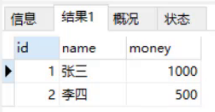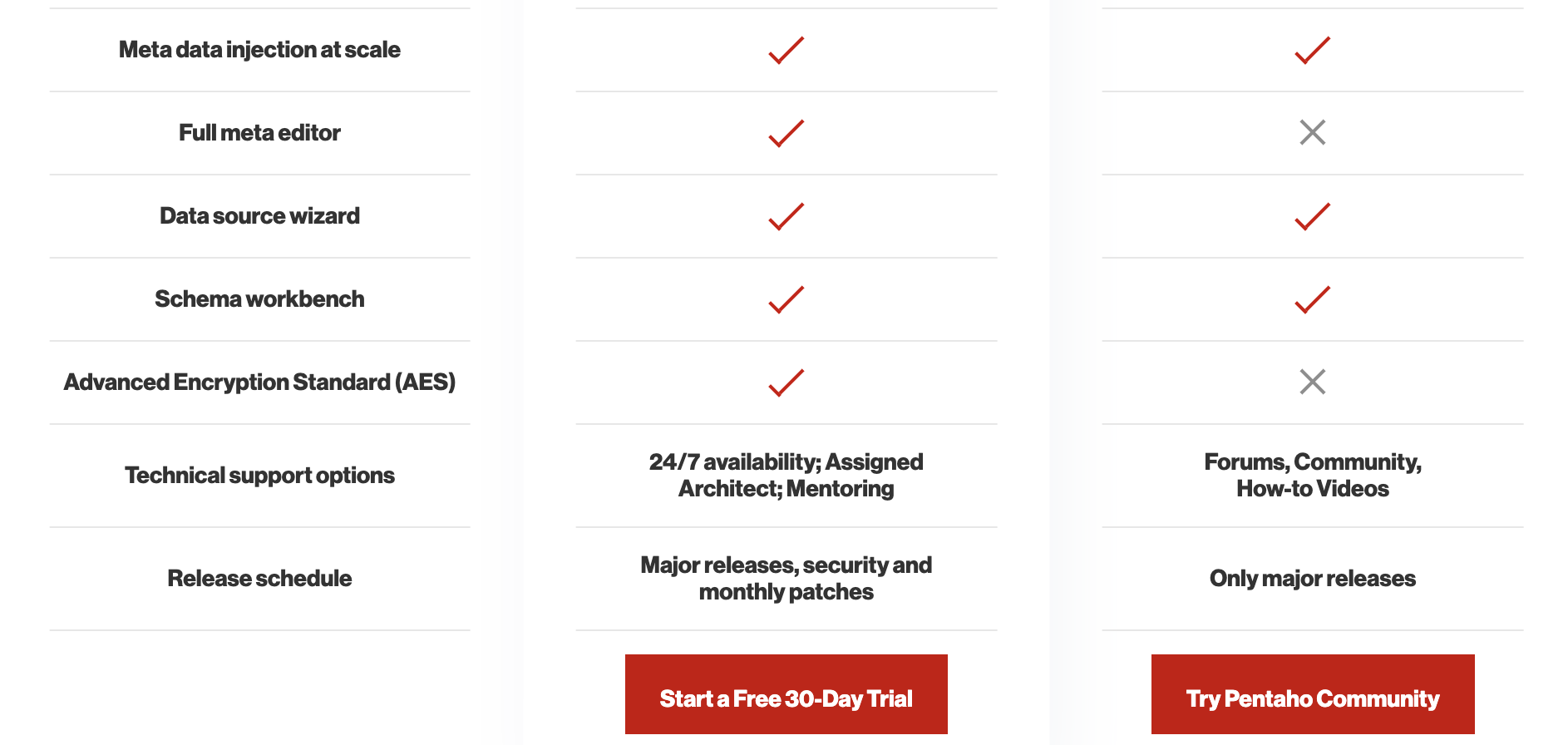RFM分析用于根据客户的购买行为来了解和细分客户。RFM代表最近一次消费 (Recency)、消费频率 (Frequency)和消费金额 (Monetary),这是三个关键指标,可提供有关客户参与度、忠诚度和企业价值的信息。本文将带您完成使用Python进行RFM分析的任务。
RFM分析:概述
RFM分析是数据科学专业人员使用的一个概念,特别是在营销领域,用于根据客户的购买行为来理解和细分客户。
使用RFM分析,企业可以评估客户的:
- Recency(他们最后一次购买的日期)
- Frequency(购买的频率)
- Monetary(购买的金额)
这是提供有关客户参与度、忠诚度和对企业价值的信息的三个关键指标。
要使用Python执行RFM分析,我们需要一个包含客户ID、购买日期和交易金额的数据集。有了这些信息,我们可以计算每个客户的RFM值,并分析他们的模式和行为。
使用Python进行RFM分析
import pandas as pd
import plotly.express as px
import plotly.io as pio
import plotly.graph_objects as go
pio.templates.default = "plotly_white"data = pd.read_csv("rfm_data.csv")
print(data.head())
输出
CustomerID PurchaseDate TransactionAmount ProductInformation OrderID \
0 8814 2023-04-11 943.31 Product C 890075
1 2188 2023-04-11 463.70 Product A 176819
2 4608 2023-04-11 80.28 Product A 340062
3 2559 2023-04-11 221.29 Product A 239145
4 9482 2023-04-11 739.56 Product A 194545 Location
0 Tokyo
1 London
2 New York
3 London
4 Paris
计算RFM值
from datetime import datetime# Convert 'PurchaseDate' to datetime
data['PurchaseDate'] = pd.to_datetime(data['PurchaseDate'])# Calculate Recency
data['Recency'] = (datetime.now().date() - data['PurchaseDate'].dt.date).dt.days# Calculate Frequency
frequency_data = data.groupby('CustomerID')['OrderID'].count().reset_index()
frequency_data.rename(columns={'OrderID': 'Frequency'}, inplace=True)
data = data.merge(frequency_data, on='CustomerID', how='left')# Calculate Monetary Value
monetary_data = data.groupby('CustomerID')['TransactionAmount'].sum().reset_index()
monetary_data.rename(columns={'TransactionAmount': 'MonetaryValue'}, inplace=True)
data = data.merge(monetary_data, on='CustomerID', how='left')
为了计算最近时间,我们从当前日期中减去购买日期,并使用datetime.now().date()函数提取天数。它给出了自客户上次购买以来的天数,代表了他们的最近价值。
然后,我们计算了每个客户的频率。我们按“CustomerID”对数据进行分组,并计算唯一“OrderID”值的数量,以确定每个客户的购买次数。它给出了频率值,代表每个客户的购买总数。
最后,我们计算了每个客户的货币价值。我们按“CustomerID”对数据进行分组,并对“TransactionAmount”值进行求和,以计算每个客户的总支出。它为我们提供货币价值,代表每个客户的总货币贡献。
通过执行这些计算,我们现在为每个客户提供了必要的RFM值,这是了解RFM分析中客户行为和细分的重要指标。
在继续之前,让我们看看结果数据:
print(data.head())
输出
CustomerID PurchaseDate TransactionAmount ProductInformation OrderID \
0 8814 2023-04-11 943.31 Product C 890075
1 2188 2023-04-11 463.70 Product A 176819
2 4608 2023-04-11 80.28 Product A 340062
3 2559 2023-04-11 221.29 Product A 239145
4 9482 2023-04-11 739.56 Product A 194545 Location Recency Frequency MonetaryValue
0 Tokyo 62 1 943.31
1 London 62 1 463.70
2 New York 62 1 80.28
3 London 62 1 221.29
4 Paris 62 1 739.56
计算RFM评分
# Define scoring criteria for each RFM value
recency_scores = [5, 4, 3, 2, 1] # Higher score for lower recency (more recent)
frequency_scores = [1, 2, 3, 4, 5] # Higher score for higher frequency
monetary_scores = [1, 2, 3, 4, 5] # Higher score for higher monetary value# Calculate RFM scores
data['RecencyScore'] = pd.cut(data['Recency'], bins=5, labels=recency_scores)
data['FrequencyScore'] = pd.cut(data['Frequency'], bins=5, labels=frequency_scores)
data['MonetaryScore'] = pd.cut(data['MonetaryValue'], bins=5, labels=monetary_scores)
分配从5到1的分数来计算recency分数,其中分数越高表示最近的购买。这意味着最近购买的客户将获得更高的recency分数。
分配从1到5的分数来计算frequency分数,其中较高的分数表示较高的购买频率。购买频率更高的客户将获得更高的频率分数。
为了计算monetary分数,分配从1到5的分数,其中较高的分数表示客户花费的金额较高。
为了计算RFM分数,我们使用pd.cut()函数将recency、frequency和monetary划分到bin中。我们为每个值定义5个bin,并为每个bin分配相应的分数。
一旦将分数添加到数据中,您将注意到它们是分类变量。您可以使用data.info()方法来确认这一点。因此,我们需要将它们的数据类型转换为整数,以进一步使用这些分数:
# Convert RFM scores to numeric type
data['RecencyScore'] = data['RecencyScore'].astype(int)
data['FrequencyScore'] = data['FrequencyScore'].astype(int)
data['MonetaryScore'] = data['MonetaryScore'].astype(int)
RFM值划分
现在,让我们根据分数计算最终RFM分数和价值段:
# Calculate RFM score by combining the individual scores
data['RFM_Score'] = data['RecencyScore'] + data['FrequencyScore'] + data['MonetaryScore']# Create RFM segments based on the RFM score
segment_labels = ['Low-Value', 'Mid-Value', 'High-Value']
data['Value Segment'] = pd.qcut(data['RFM_Score'], q=3, labels=segment_labels)
为了计算RFM分数,我们将Recency,Frequency和Monetary的分数相加。例如,如果客户的Recency得分为3,Frequency得分为4,Monetary得分为5,则其RFM得分将为12。
在计算RFM分数之后,我们基于分数创建RFM段。我们将RFM分数分为三个部分,即“低价值”、“中等价值”和“高价值”。分段是使用pd.qcut()函数完成的,该函数在分段之间均匀分布分数。
print(data.head())
输出
CustomerID PurchaseDate TransactionAmount ProductInformation OrderID \
0 8814 2023-04-11 943.31 Product C 890075
1 2188 2023-04-11 463.70 Product A 176819
2 4608 2023-04-11 80.28 Product A 340062
3 2559 2023-04-11 221.29 Product A 239145
4 9482 2023-04-11 739.56 Product A 194545 Location Recency Frequency MonetaryValue RecencyScore FrequencyScore \
0 Tokyo 62 1 943.31 1 1
1 London 62 1 463.70 1 1
2 New York 62 1 80.28 1 1
3 London 62 1 221.29 1 1
4 Paris 62 1 739.56 1 1 MonetaryScore RFM_Score Value Segment
0 2 4 Low-Value
1 1 3 Low-Value
2 1 3 Low-Value
3 1 3 Low-Value
4 2 4 Low-Value
现在我们来看看分布情况:
# RFM Segment Distribution
segment_counts = data['Value Segment'].value_counts().reset_index()
segment_counts.columns = ['Value Segment', 'Count']pastel_colors = px.colors.qualitative.Pastel# Create the bar chart
fig_segment_dist = px.bar(segment_counts, x='Value Segment', y='Count', color='Value Segment', color_discrete_sequence=pastel_colors,title='RFM Value Segment Distribution')# Update the layout
fig_segment_dist.update_layout(xaxis_title='RFM Value Segment',yaxis_title='Count',showlegend=False)# Show the figure
fig_segment_dist.show()

RFM客户细分
我们计算的上述片段是RFM值片段。现在,我们将计算RFM客户细分。RFM价值段表示基于客户的RFM分数将客户分类为诸如“低价值”、“中等价值”和“高价值”的组。通过将RFM分数划分为不同的范围或组来确定这些分段,从而允许对总体客户RFM特征进行更细粒度的分析。RFM价值部分帮助我们了解客户在Recency,Frequency和Monetary方面的相对价值。
现在,让我们创建并分析RFM客户细分,这些细分是基于RFM分数的更广泛的分类。在Recency,Frequency和Monetary方面,以下是如何创建RFM客户细分:
# Create a new column for RFM Customer Segments
data['RFM Customer Segments'] = ''# Assign RFM segments based on the RFM score
data.loc[data['RFM_Score'] >= 9, 'RFM Customer Segments'] = 'Champions'
data.loc[(data['RFM_Score'] >= 6) & (data['RFM_Score'] < 9), 'RFM Customer Segments'] = 'Potential Loyalists'
data.loc[(data['RFM_Score'] >= 5) & (data['RFM_Score'] < 6), 'RFM Customer Segments'] = 'At Risk Customers'
data.loc[(data['RFM_Score'] >= 4) & (data['RFM_Score'] < 5), 'RFM Customer Segments'] = "Can't Lose"
data.loc[(data['RFM_Score'] >= 3) & (data['RFM_Score'] < 4), 'RFM Customer Segments'] = "Lost"# Print the updated data with RFM segments
print(data[['CustomerID', 'RFM Customer Segments']])
在上面的代码中,我们根据RFM分数将RFM细分给客户,然后在数据中创建一个名为“RFM Customer Segments”的新列。
RFM分析
现在,让我们分析每个价值细分中不同RFM客户细分的客户分布:
segment_product_counts = data.groupby(['Value Segment', 'RFM Customer Segments']).size().reset_index(name='Count')segment_product_counts = segment_product_counts.sort_values('Count', ascending=False)fig_treemap_segment_product = px.treemap(segment_product_counts, path=['Value Segment', 'RFM Customer Segments'], values='Count',color='Value Segment', color_discrete_sequence=px.colors.qualitative.Pastel,title='RFM Customer Segments by Value')
fig_treemap_segment_product.show()

现在让我们分析Champions细分市场中RFM值的分布:
# Filter the data to include only the customers in the Champions segment
champions_segment = data[data['RFM Customer Segments'] == 'Champions']fig = go.Figure()
fig.add_trace(go.Box(y=champions_segment['RecencyScore'], name='Recency'))
fig.add_trace(go.Box(y=champions_segment['FrequencyScore'], name='Frequency'))
fig.add_trace(go.Box(y=champions_segment['MonetaryScore'], name='Monetary'))fig.update_layout(title='Distribution of RFM Values within Champions Segment',yaxis_title='RFM Value',showlegend=True)fig.show()

现在,让我们分析Champions细分市场中的RFM之间的相关性:
correlation_matrix = champions_segment[['RecencyScore', 'FrequencyScore', 'MonetaryScore']].corr()# Visualize the correlation matrix using a heatmap
fig_heatmap = go.Figure(data=go.Heatmap(z=correlation_matrix.values,x=correlation_matrix.columns,y=correlation_matrix.columns,colorscale='RdBu',colorbar=dict(title='Correlation')))fig_heatmap.update_layout(title='Correlation Matrix of RFM Values within Champions Segment')fig_heatmap.show()

现在让我们来看看所有细分市场的客户数量:
import plotly.colorspastel_colors = plotly.colors.qualitative.Pastelsegment_counts = data['RFM Customer Segments'].value_counts()# Create a bar chart to compare segment counts
fig = go.Figure(data=[go.Bar(x=segment_counts.index, y=segment_counts.values,marker=dict(color=pastel_colors))])# Set the color of the Champions segment as a different color
champions_color = 'rgb(158, 202, 225)'
fig.update_traces(marker_color=[champions_color if segment == 'Champions' else pastel_colors[i]for i, segment in enumerate(segment_counts.index)],marker_line_color='rgb(8, 48, 107)',marker_line_width=1.5, opacity=0.6)# Update the layout
fig.update_layout(title='Comparison of RFM Segments',xaxis_title='RFM Segments',yaxis_title='Number of Customers',showlegend=False)fig.show()

现在让我们来看看所有细分市场的Recency,Frequency和Monetary分数:
# Calculate the average Recency, Frequency, and Monetary scores for each segment
segment_scores = data.groupby('RFM Customer Segments')['RecencyScore', 'FrequencyScore', 'MonetaryScore'].mean().reset_index()# Create a grouped bar chart to compare segment scores
fig = go.Figure()# Add bars for Recency score
fig.add_trace(go.Bar(x=segment_scores['RFM Customer Segments'],y=segment_scores['RecencyScore'],name='Recency Score',marker_color='rgb(158,202,225)'
))# Add bars for Frequency score
fig.add_trace(go.Bar(x=segment_scores['RFM Customer Segments'],y=segment_scores['FrequencyScore'],name='Frequency Score',marker_color='rgb(94,158,217)'
))# Add bars for Monetary score
fig.add_trace(go.Bar(x=segment_scores['RFM Customer Segments'],y=segment_scores['MonetaryScore'],name='Monetary Score',marker_color='rgb(32,102,148)'
))# Update the layout
fig.update_layout(title='Comparison of RFM Segments based on Recency, Frequency, and Monetary Scores',xaxis_title='RFM Segments',yaxis_title='Score',barmode='group',showlegend=True
)fig.show()

总结
RFM分析用于根据客户的购买行为来了解和细分客户。RFM代表Recency,Frequency和Monetary,这是三个关键指标,可提供有关客户参与度、忠诚度和企业价值的信息。






